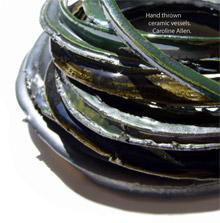Jozef Bátora (Archaeological Institute of the Slovak Academy of Sciences, Comenius University, Bratislava)
Creativity in clay workmanship as well as in special ceramic production was particularly significantly displayed in the Early Bronze Age in the Carpathian region. There are evidences that beside the common pottery production, ceramic products that were previously little known were made. First we should mention the portable hearths – pyraunoi. Originally they were associated with cults, but the excavations carried in the recent years in Slovakia (Rybník, Santovka, Vráble) continually proves that the vessel attached to the base or body of pyraunoi was a simple cooking device. Carried experiments confirmed that food preparation in pyraunoi took less than a third than a single pot over an open fire. On the settlements of Otomany culture in upper Tisa basin and in eastern Slovakia (Spišský Štvrtok) the sets of pyraunoi fragments were found with vessels, which had on the inner side of flaring rim thick horizontal groove, which was used to close the mouth of vessel with pot-lid or with another pot. There was also a spout on the edge. The mouth cover evidently indicates pyraunoi-s that were not used for common food preparation but were probably used for some special purposes.
Preparation of various substances (eg. organic dye) should be considered, as well as extraction of fragrances or alcohol distillation. Based on the East original, J. Ryšánek and V. Václav reconstructed prehistoric extractive-distillation device, which was made of two or three basic components. Another artefacts, by which the creativity of people from the observed period was expressed, were the so-called “fire covers”, consisting of perforated casing (Nitriansky Hrádok, Košice-Barca, Budkovice). Their function is still not clearly defined and the absence of traces of secondary fire indicates that they could be used as funnel-shaped pot sockets in cheese production. Remarkable group represents pots with pointed protuberances on the inner bottom, respectively on the inner walls. They are known especially in the cultures of culture complex Maďarovce-Věteřov-Boheimkirchen in southwest Slovakia, south Moravia and Lower Austria. Special category are ceramic animal figurines, that firstly appears in the settlements of Hatvan culture in upper Tisa basin and later in the settlements of Maďarovce culture on southwest Slovakia. Although their production is evidently connected with cult and rituals on the first place, their symbolic sacrifice (breaking the horns, limbs or the breaking in at least two parts) had practical relevance of everyday life. A similar importance or sense could had other ceramic artefacts such as wagon models, rattles etc.


